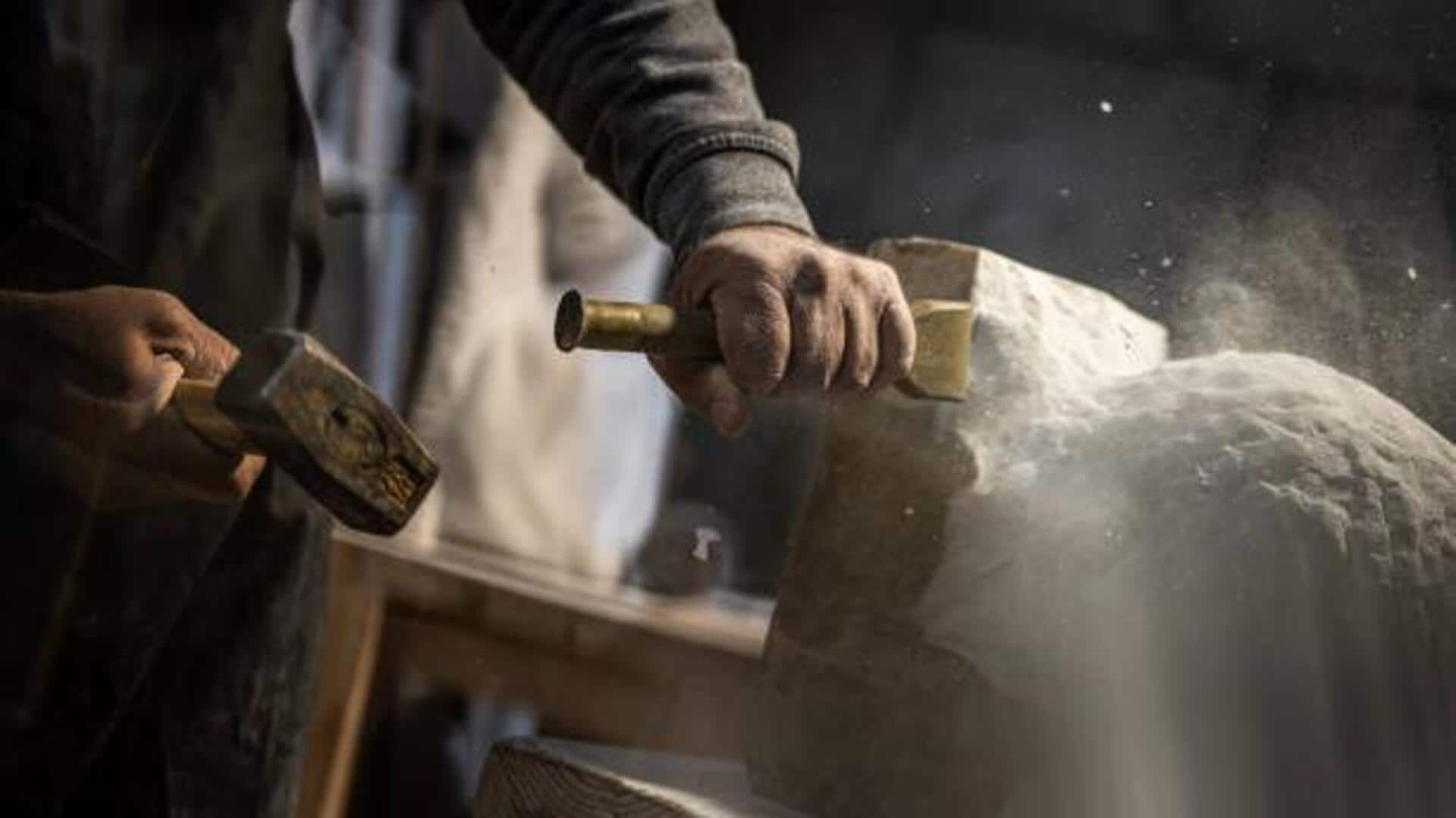
Stone sculpting 101: Tools, techniques, and more
What's the story
African stone sculpting is an elaborate tradition that highlights the continent's rich culture. The centuries-old art form involves intricate techniques, honed over generations. Artists use different types of stones to shape beautiful pieces, reflecting their communities' stories and beliefs. The process requires skill, patience, and a deep understanding of the material. Here's a look at some techniques used by African sculptors to turn raw stones into captivating pieces of art.
Material choice
Selecting the right stone
Choosing the right type of stone is critical for any sculptor. In Africa, artists frequently use materials such as soapstone, serpentine, and granite because they are available and have unique characteristics. Soapstone is soft and easy to carve, making it perfect for detailed work. Serpentine offers a variety of colors and textures that add dimension to sculptures. Granite is harder but gives durability to larger pieces meant for outdoor display.
Tool usage
Traditional carving tools
Traditional African sculptors use simple hand tools like chisels, hammers, and rasps to shape their creations. These tools empower artists with precise control over their work while keeping them rooted in age-old practices. Using hand tools also adds to the uniqueness of every piece, since no two sculptures are exactly alike when crafted manually.
Detail work
Techniques for detailing
Detailing is also a crucial component of bringing a sculpture to life. African artists use different techniques, such as incising lines or creating textures using different chisels or files. Some may use sandpaper/polishing stones to smoothen surfaces or highlight certain areas within the sculpture itself. The attention to detail gives expressive features that convey emotion through form alone, masterfully.
Final steps
Finishing touches in sculpting
The finishing process entails perfecting the sculpture's surface until it looks just right. This may involve smoothing rough edges or applying waxes and oils, which can make colors pop and protect against environmental wear over the years. The polish accentuates the natural beauty of each piece by showcasing subtle differences seen across various parts. Thus, completing the metamorphosis from raw material to finished masterpiece ready for showcasing and admiring by audiences across the globe.